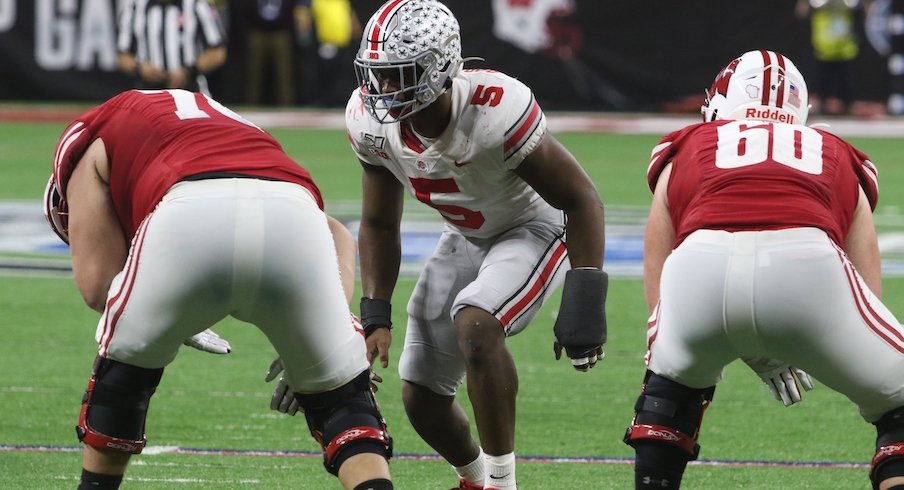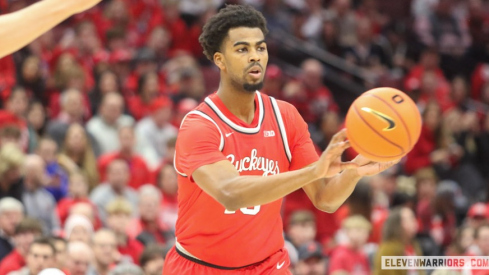Former North Carolina defensive end Beau Atkinson commits to Ohio State.
As Ohio State’s players slowly walked off of the indoor practice field at the Woody Hayes Athletic Center following the second spring practice in March, Baron Browning hung around.
He had to get in some reps as a pass-rusher before heading back to the locker room.
It was as though his pregame routine from the 2019 season had translated into a post-practice routine. In the hour-and-a-half before just about every game last fall, Browning spent a few minutes working on his standup pass-rushing technique.
Ahead of the Indiana and Nebraska game, he worked on his pass-rush moves with former defensive line graduate assistant Kenny Anunike, and before the Maryland beatdown, he got reps in with the rest of the defensive linemen then spent a couple of minutes with Anunike and Teradja Mitchell working on their outside rush. Browning had the same routine in the leadup to facing Penn State, then he worked on his pass-rush with Tyreke Smith, K’Vaughan Pope and Mitchell, getting pointers from Larry Johnson, Al Washington and Anunike in advance of the Fiesta Bowl.
It’s easy to get overwhelmed with what Ohio State does ahead of a game. From the team’s perspective, it’s a regimented, well-thought-out process. From an outside observer’s point of view, it can be chaotic. Scattered throughout one side of the 100-yard field, Ohio State’s entire team goes through their weekly process, everybody in motion at a rapid pace. Players and coaches move with a purpose, knowing what they have to accomplish, yet in doing so it’s often hard for someone watching to pay attention to one player or position group for too long. Eyes tend to wander.
But every time Browning got some work in as a pass-rusher, you couldn’t help but watch.
He’s a physical specimen. Listed at 6-foot-3 and 240 pounds, nobody has to do any deep dive into his film to see why analysts once rated him as a five-star prospect and the best linebacker in his class. Back in high school, he clocked a 4.56-second 40-yard-dash time, which helped him play nearly 750 defensive snaps over his first three seasons at Ohio State.
And as a pass-rusher, he’s a natural.
“I feel like Baron, if he wanted to, he could go play the edge right now and be dominant,” Shaun Wade said in August.
In 2020, Ohio State has to figure out how to unleash Browning as a pass-rusher off the edge more than ever before. He deserves the opportunities, and the Buckeyes – who lost Chase Young – would benefit from his impact in that area of the game.
Do you know who else agrees? The soft-spoken senior linebacker from Texas.
“Hopefully something more,” Browning said when asked in March whether he was working on third-down pass-rushing moves after practice or preparing for a larger role. “We'll definitely see. I'm just not sure yet. Just working on it so when it comes time I'll be ready.”
Browning tallied 43 tackles and 10 tackles for loss as a junior. His five sacks in 2019 are the most by any returning Ohio State player.
Yet, he hasn’t had an overwhelming amount of opportunities to get after the quarterback yet in his career. He played multiple games last season where he didn’t blitz at all. We don’t have access to a metric measuring the percentage of snaps he blitzed that ended with a sack or pressure – maybe we should try to put that stat together – but he might have finished top-two on the team in pass-rush success rate last season.
Browning possesses an electric combination of speed and power. His acceleration and bend show up often when he rushes quarterbacks off of the edge, and he’s tough to get away from when he gets into pursuit mode. At times, he picked up sacks almost without getting touched – sort of like Young – because offensive linemen didn’t account enough for his burst.
If Washington and Johnson turn to him more often as a pass rusher, it’s hard to imagine Ohio State regretting that decision.
After losing Young (16.5 sacks), DaVon Hamilton (six sacks), Malik Harrison (4.5 sacks) and Jashon Cornell (four sacks) to the NFL, the Buckeyes will need to rely more in 2020 on a few of last year’s situational pass-rushers. Browning, based on his physical gifts combined with the small sample size over the past couple of seasons, should be part of the answer.
Of course, Browning’s expected to also have an important role elsewhere.
In March, he revealed he had spent winter workouts gearing up for a switch from middle linebacker to outside linebacker. It was a move many had spent the past two years calling for as he rotated with Tuf Borland inside for both the 2018 and 2019 seasons. By moving to either the weakside or strongside linebacker spot, he's now in a better position to potentially win a starting job since Borland is still locked in as the starting middle linebacker.
The shift also put Browning back at what he described as his “natural position” that Luke Fickell once recruited him to fill. He’s been there before. In high school, he played on the weakside, describing it as an “outside linebacker role where I rushed and blitzed a lot.”
Does that sound similar to the spot he could fill as a senior at Ohio State? It should.
Since the Buckeyes have Zach Harrison, Tyreke Smith, Jonathon Cooper, Tyler Friday and Javontae Jean-Baptiste returning, they don’t have any reason to turn Browning into a full-time defensive end. That’s especially true since Browning has played well at the second level of the defense the past three years.
However, as one of seven upperclassmen in Washington’s position group, Browning should be moved around so Ohio State can take advantage of his strengths. One of the benefits he offers is as a pass-rusher – either with his hand in the dirt or standing up.
“I guess you've kind of just all got to see,” Browning said with a smirk.
So should people be on alert for him becoming the next Chase Young?
“I'm the next Baron Browning,” he quipped.
That should be good enough.


